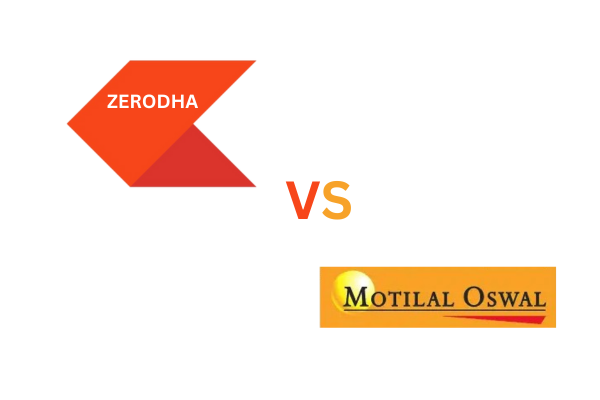Stock buybacks have become a popular financial strategy among corporations, especially in recent years. They can significantly impact a company’s share price, earnings per share, and market valuation, influencing the portfolios of individual investors. For those interested in optimizing their investment portfolios, understanding stock buybacks: how they impact your portfolio is essential to making informed decisions. In this article, we’ll dive into the mechanics of stock buybacks, their pros and cons, and how they affect investor holdings.
Table of Contents
What Is a Stock Buyback?
A stock buyback, or share repurchase, is when a company buys back its shares from the open market. By purchasing its shares, the company reduces the number of outstanding shares, which can often boost its stock price and earnings per share (EPS). Companies may initiate buybacks for various reasons, such as to deploy excess cash, show confidence in their long-term profitability, or enhance shareholder value. When understanding stock buybacks: how they impact your portfolio, it’s crucial to recognize why a company might undertake this strategy and how it could affect your investments.
Reasons Behind Stock Buybacks

- Increasing Shareholder Value: One of the primary reasons for a stock buyback is to increase shareholder value. By reducing the number of shares outstanding, companies can increase their EPS, which can attract more investors.
- Using Excess Cash: Companies often accumulate cash reserves. Rather than letting it sit idle, they may use it for stock buybacks, which can be a more tax-efficient option than paying out dividends.
- Signaling Confidence: A company initiating a buyback is often perceived as having confidence in its future performance, signaling to investors that it believes its stock is undervalued.
How Stock Buybacks Affect Share Prices and EPS
One of the key aspects of understanding stock buybacks: how they impact your portfolio is their effect on share prices and EPS. A buyback decreases the supply of shares in the market, which can lead to an increase in the stock’s price if demand remains steady. For investors, this can mean a rise in the value of their holdings. Additionally, by reducing the number of shares, companies can increase their EPS, an important metric for investors. A higher EPS often makes a stock more attractive, potentially leading to price appreciation.
Tax Implications of Stock Buybacks

Investors should also consider the tax implications of buybacks. Unlike dividends, which are taxed as income, the gains from share price appreciation due to buybacks are only taxed upon selling the stock, often at the capital gains tax rate. This distinction can make buybacks more tax-efficient for investors seeking long-term gains. As we explore understanding stock buybacks: how they impact your portfolio, recognizing this tax advantage can be crucial for planning a tax-efficient investment strategy.
Buybacks vs. Dividends: Which Is Better for Investors?
Many companies must choose between using cash for buybacks or paying dividends. Dividends provide a direct income stream to shareholders, while buybacks focus on enhancing shareholder value by increasing stock prices. While dividends can be appealing for income-focused investors, buybacks may be more suitable for those aiming for capital appreciation. Understanding stock buybacks: how they impact your portfolio includes assessing your own investment goals. A balanced portfolio might benefit from a combination of stocks offering dividends and others engaging in buybacks.
How to Evaluate Stock Buybacks in Your Portfolio
When analyzing a stock’s potential, evaluating its buyback history and plans can be enlightening. Look at metrics such as the company’s price-to-earnings (P/E) ratio and EPS before and after buybacks to assess the strategy’s effectiveness. While some buybacks provide substantial shareholder value, others may not offer the same benefits if the stock is overvalued or if the company’s fundamentals are weakening. For a clearer picture in understanding stock buybacks: how they impact your portfolio, consider both financial metrics and the timing of the buyback.
Benefits of Stock Buybacks
- Boosted Share Prices: Reduced supply can push share prices higher, which may lead to capital appreciation in your portfolio.
- Increased EPS: With fewer shares outstanding, EPS often rises, making the stock potentially more attractive to new investors.
- Tax Advantages: Gains from buybacks are taxed at capital gains rates, which can be more favorable than the tax on dividend income.
- Flexibility: Buybacks offer companies flexibility since they are not obligated to repurchase shares, while dividends are often expected once established.
Risks Associated with Stock Buybacks

While stock buybacks can offer various advantages, they also carry risks that investors should consider:
- Misuse of Cash Reserves: If a company uses buybacks irresponsibly, it may deplete its cash reserves, limiting funds for growth or debt repayment.
- Short-Term Focus: Buybacks can sometimes signal that management is more focused on short-term stock prices than long-term growth, which could be a red flag for investors.
- Increased Debt Levels: In some cases, companies take on debt to finance buybacks, which could burden their balance sheets if not managed properly.
When Stock Buybacks Signal a Red Flag
Not all buybacks are positive indicators. If a company engages in buybacks to artificially inflate its EPS without corresponding improvements in fundamentals, it could be a warning sign. Additionally, companies taking on significant debt to fund buybacks may face financial challenges in the future. Recognizing these nuances is essential for understanding stock buybacks: how they impact your portfolio. Investors should look for companies that use buybacks responsibly and avoid those relying on buybacks as a primary means of propping up their stock prices.
Case Studies: The Impact of Buybacks on Stock Performance
Examining case studies of successful and unsuccessful buybacks can shed light on their potential impacts:
In India, stock buybacks have shown mixed results. For instance, Infosys, a major IT services company, has conducted regular buybacks, effectively reducing outstanding shares and enhancing earnings per share (EPS), which helped stabilize its stock and improve investor confidence. On the other hand, Jet Airways initiated buybacks in the early 2000s to signal financial strength, but the company later faced financial struggles due to mismanagement and debt burdens, ultimately leading to its downfall. These cases illustrate how buybacks can boost performance if backed by strong fundamentals, while poor financial management can lead to negative outcomes despite buyback initiatives.
These cases underscore the importance of understanding stock buybacks: how they impact your portfolio by evaluating the company’s overall strategy and financial health.
The Role of Stock Buybacks in a Balanced Portfolio
A balanced portfolio often includes a mix of growth stocks, income-generating assets, and companies with stable fundamentals. Incorporating stocks that engage in buybacks can add a unique layer to your portfolio. Buybacks often signal strong cash flows and management confidence, which can offer a level of stability. However, understanding when and why a company initiates a buyback is key to understanding stock buybacks: how they impact your portfolio and maintaining a well-rounded investment approach.
How to Monitor Stock Buybacks in Your Portfolio
To track stock buybacks, consider tools that allow you to monitor changes in a company’s outstanding shares and EPS trends. Regularly reviewing quarterly earnings reports, company announcements, and shareholder letters can also provide insight into ongoing buyback activities. Monitoring buybacks is a vital aspect of understanding stock buybacks: how they impact your portfolio and adapting your investment decisions accordingly.
Conclusion: Making Stock Buybacks Work for You
In conclusion, understanding stock buybacks: how they impact your portfolio can empower investors to make better decisions. Stock buybacks can be powerful for enhancing shareholder value, but they require careful consideration of a company’s financial health and buyback intentions. For those seeking capital appreciation, buybacks can offer tax-efficient gains, while dividend-seeking investors may prefer direct income. By evaluating the reasons behind buybacks, assessing their impact on key financial metrics, and monitoring company strategy, investors can make more informed choices about including buyback-oriented stocks in their portfolios.





